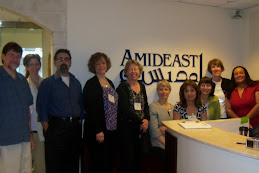-------------------------
Those Poor Oppressed Muslim Women
In my experience, Americans often have a pre-conceived notion that Muslim women are to be pitied, especially those who wear the traditional coverings, as they do here in the UAE. My initial, non-scientific impressions of the local Emirati women is that our pity could better be directed elsewhere.
It’s true that most of the local women wear the traditional black abeyas (long robes) and shaylas (scarves.) They are also very sheltered from men. Before they are married, they tend not to have much interaction with men who are not their relatives. This is done as a way to protect the women from sexually predatory men. According to one local Emirati woman I met, they have arranged marriages, but this doesn’t mean they have no choice. She said that the mothers typically do match-making. The idea is that a mother knows more about what is required for a successful marriage than does a young woman. A mother also knows who would be compatible with her daughter. If a mother finds a young man she thinks is suitable for her daughter, she will arrange for an introduction between the young man and woman. This introduction will, of course, be chaperoned. If the two people like each other, they then become engaged. The engagement is a way to ensure that the man’s intentions are serious and honorable. During this engagement, the couple has a chance to get to know each other better. If, during this period, one or both decides they do not like each other, they are free to call off the engagement. If they do like each other, they marry. Obviously, their dating practices are very different from American dating practices.
In terms of education and professional occupations, however, the world is wide open for Emirati women. The women are encouraged to go to college and graduate school and are doing so in high numbers. Something like 70% of the university students are women, and many of them go on to graduate school. It is very common for young wives to be much more educated than the husbands. If they go to public universities, education is completely free, including books. We have toured many of the universities and found them to be similar in terms of curriculum as ours. In fact, many of the professors are Western or at least Western-educated. The textbooks are in fact almost all American. The facilities are, however, usually much nicer than ours, or at least the universities with which I am familiar.
Women can be found in all sorts of professions, and are encouraged to do so. One young Emirati woman said she had felt no discrimination whatsoever, and in fact felt that she was given privilege over men in terms of education and profession. Some of the universities are gender segregated, but others are not. Women are free to choose where they want to go. The ruler decided to build gender-segregated universities so that conservative families will feel comfortable sending their daughters to college.
In general, the Emiratis are very well off financially. The state pays for most everything: not only health care and education, but also provides young couples with a home (and a very nice one) when they get married. Incomes are fairly high as well, so most Emiratis do not have to worry much about material well-being. All of them have maids and other domestic labor (imported from southeast Asia), so they don’t worry about housework. They of course have chauffeurs and cars as well. Perhaps that’s why the women spend so much time at the mall, and spend money on designer clothing, oodles of jewelry, designer handbags, and so forth.
Although the stereotype of Muslim women is that they are submissive, I haven’t seen much evidence of this submissiveness. In fact, my impression is that they are gorgeous, confident, glamour queens. (Many of us Americans feel like frumpy peasants in contrast.) They glide around in their robes like local aristocrats. Local observers say that their main problems stem from being over-indulged and bored, rather than being oppressed and abused.
Tuesday, June 1, 2010
Subscribe to:
Post Comments (Atom)

No comments:
Post a Comment